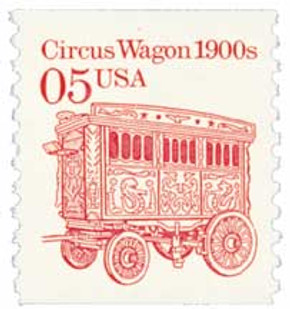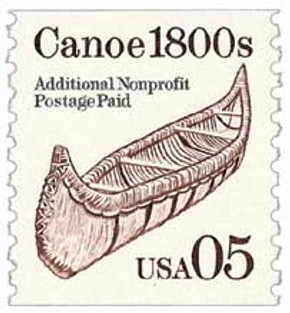US #2466
1995 Ferryboat
- Part of Transportation Series
- Third stamp in series to cover first-class rate
Category of Stamp: Definitive
Set: Transportation Series
Value: 32¢, First Class Mail rate
First Day of Issue: June 2, 1995
First Day City: McLean, Virginia
Quantity Issued: 4,000,000,000
P... more
US #2466
1995 Ferryboat
- Part of Transportation Series
- Third stamp in series to cover first-class rate
Category of Stamp: Definitive
Set: Transportation Series
Value: 32¢, First Class Mail rate
First Day of Issue: June 2, 1995
First Day City: McLean, Virginia
Quantity Issued: 4,000,000,000
Printed by: Bureau of Engraving and Printing
Printing Method: Engraved
Format: Coils of 100
Perforations: 9.8
Reason the stamp was issued: This stamp was part of the Transportation Series. It covered the First-class postage rate at the time.
About the stamp design: The image on the 32-cent Ferry Boat stamp is a composite drawing based on several boats from the early 1900s. The Newark II (1902) and the Chicago II (1901), however, were the primary sources for the design. Artist Richard Schlecht provided the pen-and-ink drawing of the ferryboat to the Citizens’ Stamp Advisory Committee in 1990, but the design wasn’t used for five years.
First Day City: There was no official USPS ceremony for the release of this stamp. Local postal officials organized an event to correspond with Napex, a stamp show that was occurring in McLean, Virginia. The Pink Rose stamp (#2492) was issued at the same time.
About the Transportation Series: On May 18, 1981, the USPS issued the first stamp in the Transportation Series, US #1907, picturing the Surrey, a doorless four-wheeled carriage. For the first time in US history, a coil stamp featured its own unique design rather than simply copying that of the current definitive stamp. Over 50 more coil stamps would be issued over the course of the next 15 years, each picturing a different mode of transportation. All of these types of transportation were used since American independence.
The various denominations provided face values to exactly match the rates for several categories of Third-Class mail (bulk rate and quantity-discounted mail). As the rates changed, new stamps with new values were added. Never before had a stamp series included so many fractional cent values.
The Bureau of Engraving and Printing printed most of the stamps in the Transportation Series, although private contractors printed a few. All but a few of the later stamps were produced by engraved intaglio. Differences in precancels, tagging, paper and gum provide a large number of varieties.
Scott Catalog separates the Transportation stamps into four groups. The stamps in the first group (#1897-1908) generally have the denomination in small type with a “c” next to it. These stamps were printed on the Cottrell rotary press, which joined together two plates to make a sleeve. The gaps between these plates created depressions where ink would collect and create joint lines on the stamps. Later issues were printed on a different press and didn’t have these joint lines.
The second group (#2123-36) had larger numbers with no “c.” The third group (#2252-66) was similar in appearance to the second group, but service inscriptions were added to the designs. These stamps also used a variety of paper and gum as well as different types of tagging. The fourth group (#2451-68) marked the end of fractional values. Now bulk mailers would use either the 5¢ or 10¢ stamp and then pay the difference from the actual postage rate.
The last stamp in the Transportation Series, the 20¢ Cog Railway, was issued on June 9, 1995, at the TEXPEX ’95 stamp show in Dallas, Texas. This marked the end of the largest US definitive series up to that time and the largest US coil stamp series in history. Three new series would eventually replace it – American Transportation, American Culture, and American Scenes. Additionally, the Great Americans would go on to become the largest American definitive series.
History the stamp represents: Ferry boats have been used for hundreds of years. Early ferries were often just rafts which were either rowed or moved by poles. Cables were later used to draw the ferries, and today, most ferries are powered by their own engines.
Less 


















